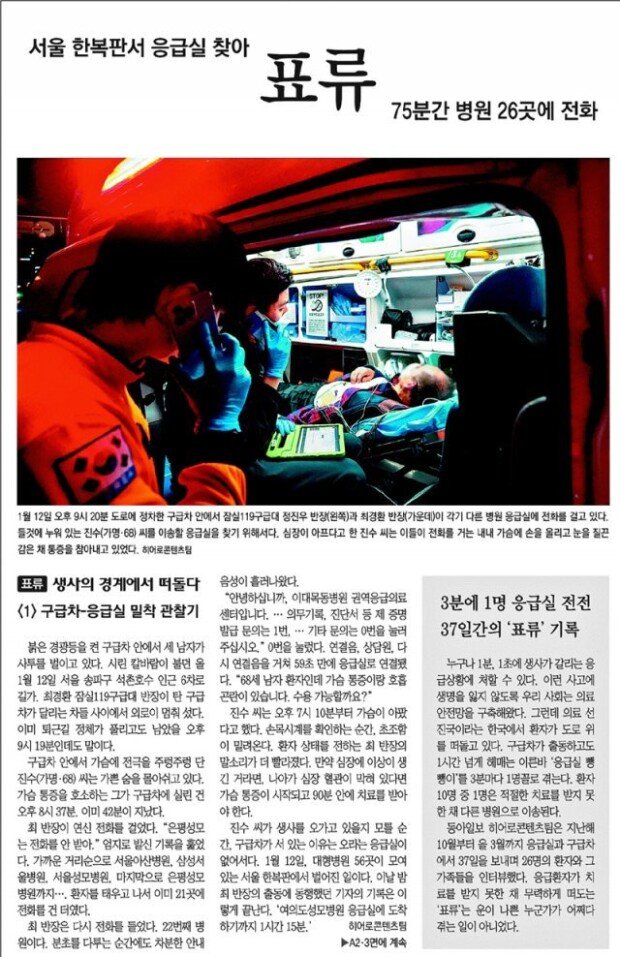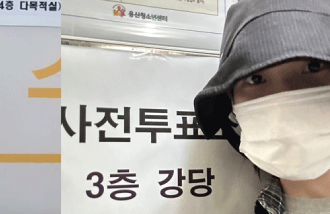The number of emergency medical centers to increase to 60
The number of emergency medical centers to increase to 60
Posted April. 06, 2023 08:06,
Updated April. 06, 2023 08:06

The South Korean government began the review and improvement of the country’s overall emergency medical system to address the ‘drift’ issue of emergency patients where patients’ lives are put in danger while looking for hospitals to accept them. The number of emergency medical centers for severe cases that ensure patients’ arrival within one hour anywhere in the country will increase from 40 to 60 and a one-stop patient transfer system will be set up.
The government and the People Power Party held a government-ruling party meeting to develop medical measures for pediatric, emergency, and non-face-to-face patients on Wednesday morning at the National Assembly and announced follow-up measures for the incident where a teenage student died in Daegu while looking for an emergency room to take her in. The Dong-A Ilbo’s Hero Content team reported on the reality of the emergency medical system in its series titled ‘Drift – Hovering between life and death.’ “The government and the ruling party will look into the fundamental causes of emergency room ‘drift’ incidents and come up with measures to strengthen the basic medical system, including pediatric treatment, childbirth, and surgery,” said Joo Ho-young, the floor leader of the People Power Party.
“We decided to build a one-stop patient transfer system where information is shared in real time, from the dispatch of the emergency team to patient transfer and treatment in emergency rooms,” the ruling party's policy committee leader Park Dae-chul said in a Wednesday briefing. The decision is in response to criticism that a system to connect patients with surgeons is poor.
The government and the ruling party also plan to reform the functions of the emergency medical centers for severe cases to cover final treatment, including surgery and hospitalization, and to improve the working conditions of medical teams by raising national health insurance fees for emergency care for severe cases, providing on-call pay for overnight and holidays, and ensuring appropriate working hours.
However, the measures announced on Wednesday were all included in the fourth basic emergency medical plan for 2023-2027 released by the Ministry of Health and Welfare last month. A member of the ministry said the Wednesday announcement meant the implementation of the basic plan would be accelerated. According to the Ministry of Health and Welfare’s timeline, the pilot project to reform the functions of the emergency medical centers for severe cases and increase their number will begin to be implemented by the end of this year and the main project will start in 2025. The ruling party will provide proactive support for the reform of the Emergency Medical Service Act and the expansion of the emergency medical service fund.
The government and the ruling party also discussed solutions for the crisis caused by the increasing close-down of pediatric hospitals. “The government and the ruling party will work closely to improve the treatment conditions of pediatric hospitals and increase the number of pediatric medical workers,” said Park. In addition, non-face-to-face treatment, which was temporarily allowed during the COVID-19 era, will be institutionalized. The government and the ruling party shared an understanding that access to such treatment was largely improved during COVID-19 and it should not return back to the previous state.
ksy@donga.com · 9dragon@donga.com



![[속보]김문수 “역사적 큰 죄 지어…국힘 민주주의 사명감 부족”](https://dimg.donga.com/c/138/175/90/1/wps/NEWS/IMAGE/2025/06/04/131746434.1.jpg)
![[속보]尹정부 국무위원 사표, 박성재 법무만 수리하고 나머지 반려](https://dimg.donga.com/c/138/175/90/1/wps/NEWS/IMAGE/2025/06/04/131746226.1.jpg)


